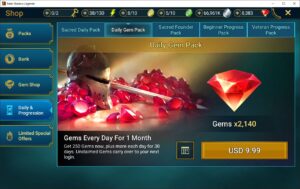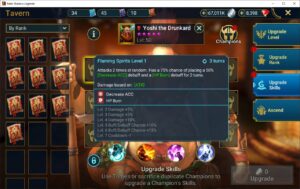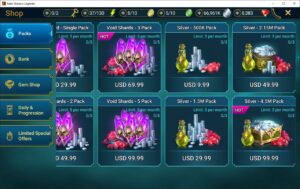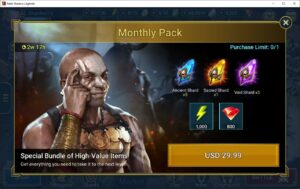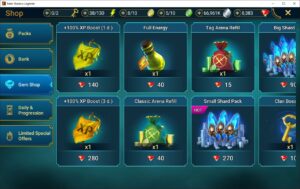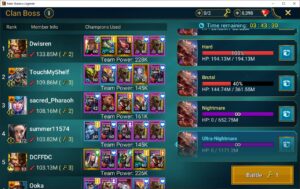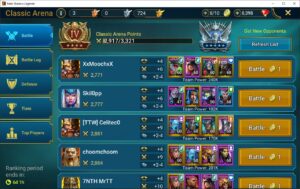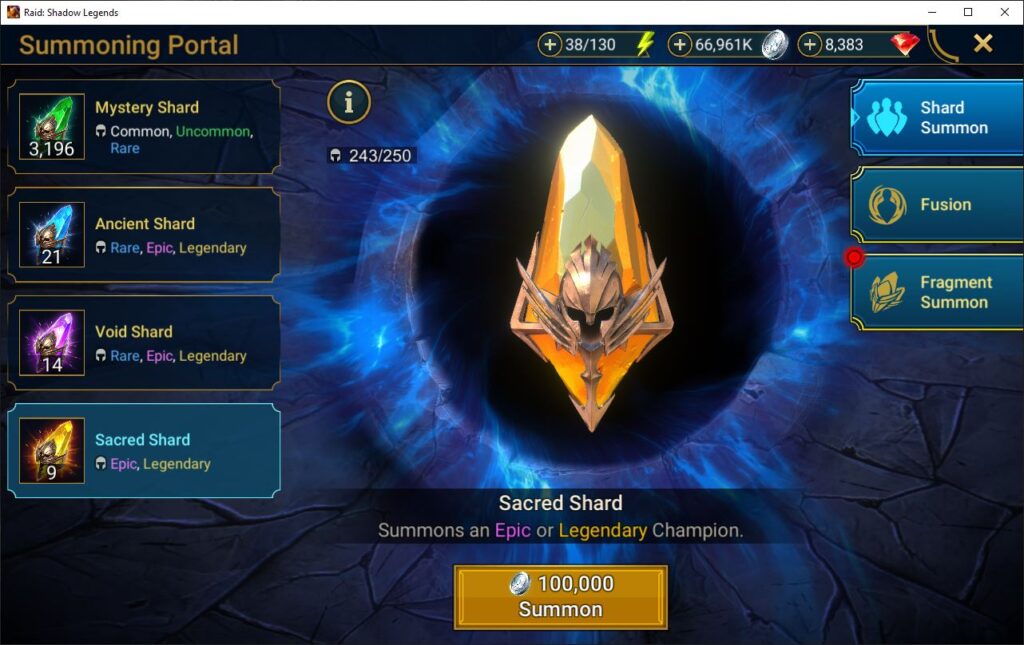
Welcome to ‘Is it Pay to Win’ – a column where we examine a game and decide if that game is has aspects of pay to win and to what extent. Check out Is it Pay to Win?: Defined to see how we break down the components of pay to win (p2w), such as pay for advantage, pay for convenience, and pay for cosmetics.
Raid: Shadow Legends describes itself as a “mythical RPG with hundreds of champions and 14 factions”. While it’s originally a mobile game, it is also available on PC. It features champion collection (with level and gearing of those champions), dungeon bosses, a campaign (with a story, sort of) clans, tournaments, events and more. It has a cash shop that allows you to buy most things you could acquire in game.
Scoring:
- Pay for Power: 4/5
- Pay for Advantage: 4/5
- Pay for Convenience: 4/5
- Pay for Cosmetics: 3/5
- Pay to Win: 3.86
See below for a brief game play description and a detailed breakdown of how we come up with those scores.
Game Play
This game is all about collecting champions and increasing their power in order to build teams that fight in each type of content. There is the campaign, which has the story originally and is the main place to gain experience. There are gear dungeons, dungeons for getting materials to “ascend” champions or get their masteries (talents). PVP comes in with the arena, where you battle against other player’s preset defenders and set your defense to do the same. Faction wars lets you collect enchantments for your gear and some materials to craft more gear. Finally, with your clan you can do the clan boss, which takes many plays several attempts per day to “kill” and double rewards, clan quests – which essentially just ask you to do other stuff listed here a few or a lot of times, and clan vs clan which… really has no versus element, you just do all of the stuff for points and whoever gets more points wins.
For champion collection, however, aside from a few farmable champs from the campaign, a couple that can be crafted, and a once per month event to get one, the rest must be pulled from shards.
The main game play loop focuses on grinding. After getting some decent champions, you take those and farm each level of dungeon for more gear, until you can do further. Since every dungeon drops random sets of items, and each item has random stats, and upgrading each item gets random results, it can take a very, very long time to get specific pieces that you need for each champion and team.
Finally, while you can do essentially all of the content on “manual”, aka, controlling your characters every move, you can also autobattle the entire time and changes the dynamic of the game, or at least the players time spent “playing”.
Monetization
Raid: Shadow Legends is completely free to play, but you can buy almost everything. Their cash shop includes a fixed list of most of their basic things, from champion shards to energy, at incredibly high prices. They have a couple of monthly deals, like their gem pass (gems every day), their raid card (bonus silver/xp). Silver is used as the facilitator for most actions. Upgrading gear costs silver, using your shards to summon costs silver, swapping gear costs silver. There is, also, a section that rotates daily with special deals, bundles, and lowered pricing from their fixed shop.
Additionally, their system targets players for specific offers. If you’re missing pieces of a legendary champion from a previous event (that cannot be earned otherwise) they’ll sell those for extremely high prices. The rotational pack prices/sizes will scale up based on recent user spending. Further, when their events rotate, they will sell specific packs that will be of particular advantage to those events.
Scoring: Here we break down the scores.
Pay for Power: 4/5
The only thing stopping this from being 5/5 is the fact that there’s nothing that can be bought that can’t be earned in game. Champion shards and upgrade materials drop from different types of content. However, most everything is incredibly limited – particularly legendary quality things and their “void” shards, which summon champions that have no weaknesses. You can directly buy the shards that summon champions, the books and potions that upgrade their skills and stats, brews that give them levels, and, somewhat randomly, gear to equip on them. While they aren’t exclusive to their shop, you can directly buy every form of power in this game.
Pay for Advantage: 4/5
Similar to the above, purchases help you gain advantage in every area. Outside of directly buying the power increases, being able to buy energy means you can increase your rate of power gains above what someone who doesn’t buy could do. This applies a lot more to new accounts than older ones. Once you’re a certain amount progressed, you’re more limited by time, than energy. But, given the advantage gaining power, the advantage getting to that mid-end game point, and tournament advantages from spending, this still comes in pretty high.
Pay for Convenience: 4/5
Convenience in this game comes down to mostly two areas: multi-battles and storage. Multi-battles essentially means you don’t have to watch your screen and hit next every few seconds/minutes for hours on end as each autobattle continues on automatically. You have a few multi-battles per day for free, but can get the raid card (or certain packs) to gain additional multi-battles. This is a pretty nice convenience factor as it saves the amount of time you need to be paying attention. For longer dungeons, it lets you leave your app running while you’re sleeping or otherwise occupied. Storage also comes in fairly heavy as gems buy additional storage (and money buys gems). It isn’t uncommon to be running up against the arbitrary champion storage limits, particularly when saving materials for upgrading champions. This ends up with a moderate-high score because these two areas are significant, but not game breaking for a non-spender. Though, the scope of convenience doubles down the more you spend, as you can more energy and champs, multi-battles and storage becomes more important.
Pay for Cosmetics: 3/5
This one is a little complicated for this game. There is nothing that is cosmetic only. However, it’s not uncommon for players to discuss which of the champions that they like the cool of. Some of the art in the game is very cool. As such, the “cosmetics” (champions) can be both bought and earned. There are none that are exclusively locked behind paywalls, but you’re going to have much higher odds of getting cool ones if you’re buying expensive shards than if you’re just waiting to open what you can earn naturally. We’ll give this an average score.
Summary and Verdict
This isn’t exactly surprising, a mobile gacha game ends up with a high pay to win score. However, it isn’t as bad as it could be, given that while you can essentially spend an infinite amount of money to gain more power and progress faster, it does have a limit. Dungeons still must be run to get gear. The clan boss still has to be fought. You still have to spend time customizing your teams and testing what works. Additionally, there is nothing exclusively locked behind spending. There are no champions or gear or appearances that are exclusive to big spenders. The overall p2w score Raid: Shadow Legends ends up at 3.86*, which we’re going to call: Pay for Extreme Advantage. It avoids being labeled truly “pay to win” (even though, most would call it as such in a broad sense), by not locking anything behind a paywall. Free to play players can clear every bit of content and can even complete with spenders in many areas, it just tends to take more grinding, more preparation and more time.
*For determining the total pay to win score, power is weighted by 3x and advantage by 2x. In this way, a game that has a 5 pay for power, 1 advantage, 1 convenience, 1 cosmetic would have a higher P2W score than 1 for power, 1 advantage, 1 convenience, 5 cosmetic. Most of our experience and opinion is that pay for power and advantage are more important when considering “pay to win” than the convenience or cosmetic aspects, but all aspects should still count in their own way.
Review Completed on 11/15/2021.

